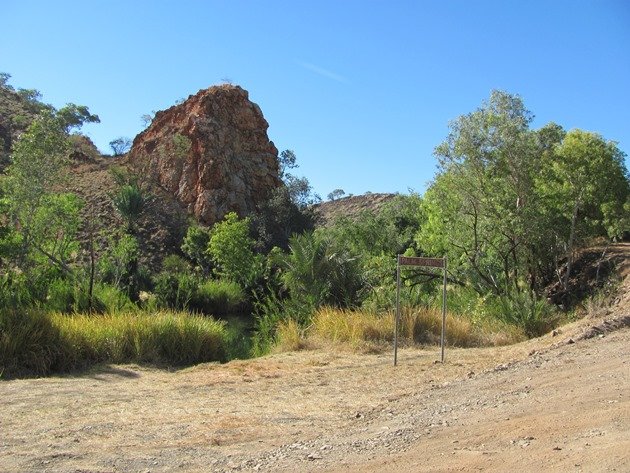
We visited Palm Springs, California towards the end of 1989 and we camped and looked for birds. This year we did the same, but this time it was Palm Springs, Western Australia! On our trip to Kununurra and Keep River National Park in August we took a detour when we reached Halls Creek. It is possible to drive the Duncan Highway all the way through to the Northern Territory and it is a good gravel road, but because there were some other places we wanted to visit on the main highway we did not take the Duncan Highway beyond Palm Springs. Halls Creek is approximately 685kms/425 miles from Broome with only one small town en route, which is Fitzroy Crossing where you can visit Geikie Gorge during the Dry Season. The road to Palm Springs is very windy and you do need to allow an hour to get there despite it only being approximately 45kms/28 miles. In actual fact you need to allow more than an hour, because shortly after leaving the township of Halls Creek you go through a small range of hills and at this point you should turn down a track to your left. This track will lead you to the Halls Creek Poo Ponds and these are by far the best Poo Ponds in the north of Western Australia! There is a gravel road around the ponds which is at the same level as the water and all of the birdlife is clearly visible. On our visit there were several hundred Pink-eared Ducks, Grey Teal, Pacific Black Ducks and Hardheads.
Pink-eared Ducks through the poo Ponds fence
Brolga were also present in the ponds and Black-winged Stilt. There were Black-fronted Dotterels, Red-kneed Dotterels and Red-capped Plovers along the muddy edges.
Brolga and Black-winged Stilt through the Poo Ponds fence
There were 12 Red-necked Avocet feeding in the ponds and along the fenceline there were Zebra Finch, Peaceful Doves and Diamond Doves nipping back and forth for water. A group of Spinifex Pigeons ran along beside our vehicle on the inside of the fence and Red-backed Fairywrens hopped up out of the long grass. Our nicest surprise was the small flock of Pictorella Mannikins that appeared out of the bush and briefly stopped on the fence before going into the ponds for water.
Red-necked Avocets through the Poo Ponds fence
Pictorella Mannikins on the Poo Pond fence
We arrived at Palm Springs in good time to go a short distance beyond to visit Sawpit Gorge. It had taken us a couple of hours to get there from Halls Creek due to the excellent birding opportunities at the Halls Creek Poo Ponds!
Sawpit Gorge
We then returned to Palm Springs to camp. It didn’t take long to discover that there was water remaining in the Black Elvira River and that the spring itself was still flowing. The river itself was not flowing and although the pools were not substantial they were substantial enough to hold several small crocodiles. We also soon realised that it would be advisable to go to bed when the birdlife went quiet, because the bird species we had seen so far would be up with first light!
Palm Springs
The riverbank was lined with large trees and the Little Corella were roosting in them as were the Red-tailed Black Cockatoos.
Little Corellas
Red-tailed Cockatoos on sunset
We had a wander around the whole of the remaining water body the next day after being woken by Budgerigars, White-gaped Honeyeaters, Grey-crowned Babblers and of course the Blue-winged Kookaburra! We had heard Southern Boobooks calling in the night, which was not unexpected. We accidentally flushed a pair of Nankeen Heron as we started our walk and then another pair shortly afterwards. Although the water is apparently in the middle of nowhere at this time of year it would be a flowing river as soon as the first Wet Season rains came.
The smallest pools of water were sustaining numerous finches including Crimson Finch, Long-tailed Finch, Double-barred Finch and Zebra Finch. The long grasses and reeds were perfect for them and they had plenty of protection along the length of the river. We had heard several Great Bowerbirds and we were not surprised to find its bower in the riverbed. There is very little human presence in the area so all of the “treasures” were mainly natural apart from a piece of a broken glass bottle.
Great Bowerbirds bower
A Restless Flycatcher joined the White-gaped Honeyeaters, Rufous-throated Honeyeaters, Yellow-tinted Honeyeaters, Black-chinned Honeyeaters and Grey-fronted Honeyeaters at the small pools along the edge of the riverbank.
Restless Flycatcher
Having circumnavigated the water body we decided we could sit and relax and let the birds come to us. It didn’t take long for us to observe White-bellied Cuckoo-shrikes, Weebills and Red-winged Parrots in the area and then we had a surprise….out of apparently nowhere a Black-necked Stork landed in the river in front of us.
Black-necked Stork
In the time that we spent at Palm Springs we saw 55 species of birds and several small crocodiles. There were several raptors cruising the escarpment including Wedge-tailed Eagles, Black-breasted Buzzards and Nankeen Kestrels and it is an ideal place to visit either as a day trip from Halls Creek or to spend an overnight in the bush.

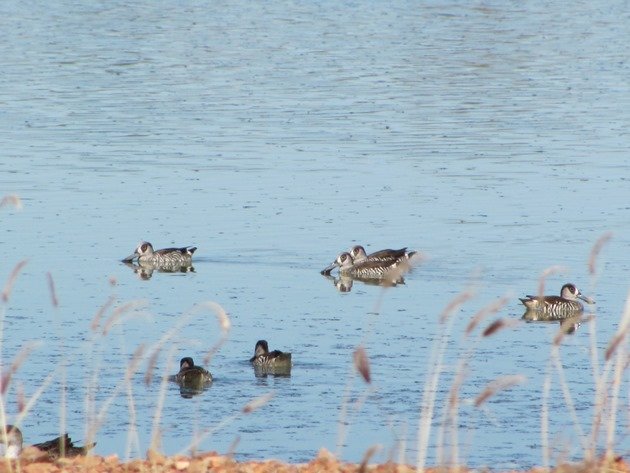
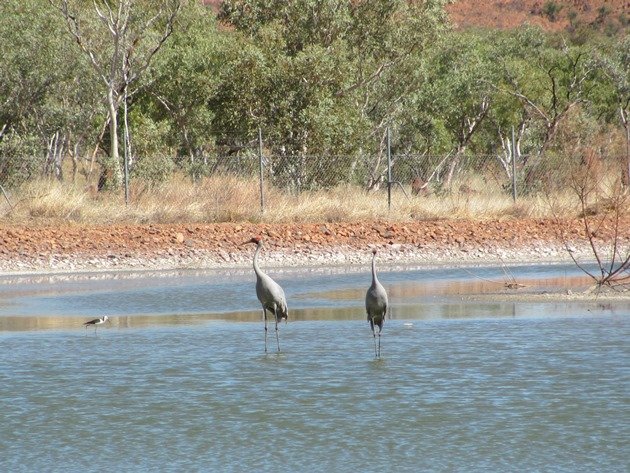
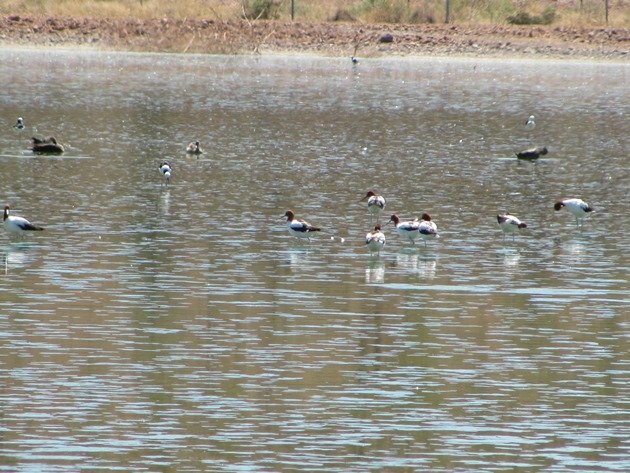
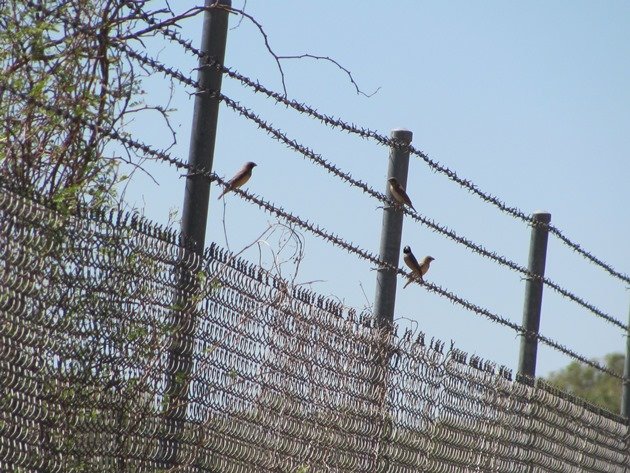
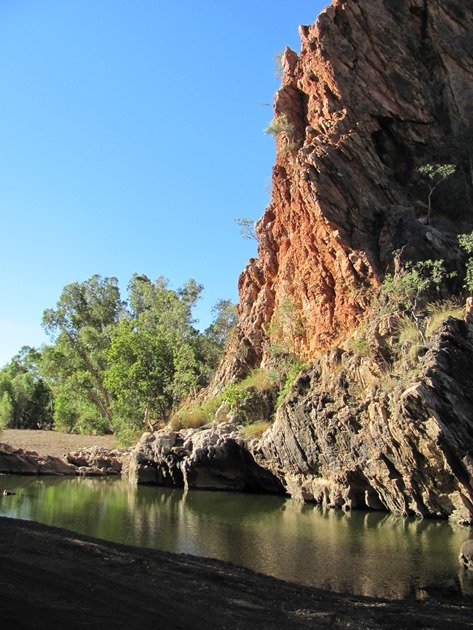
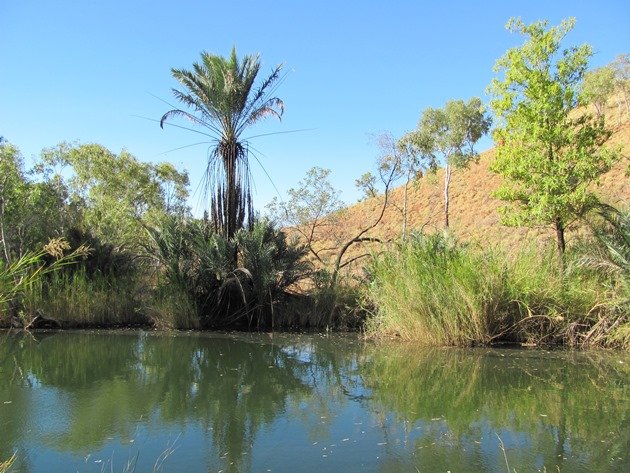
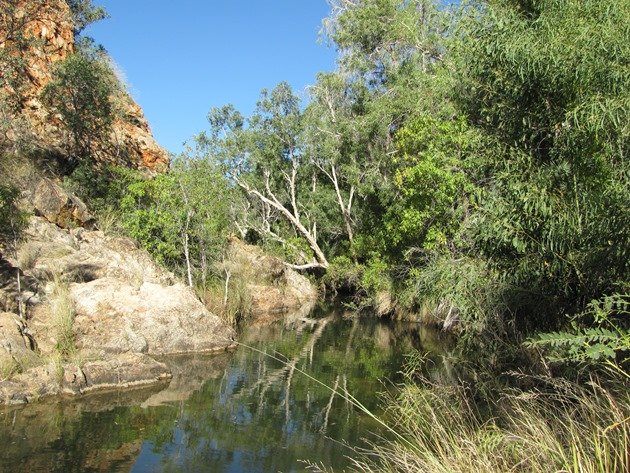
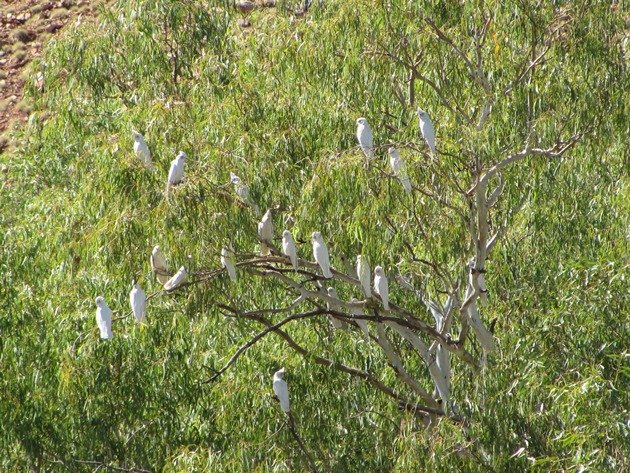
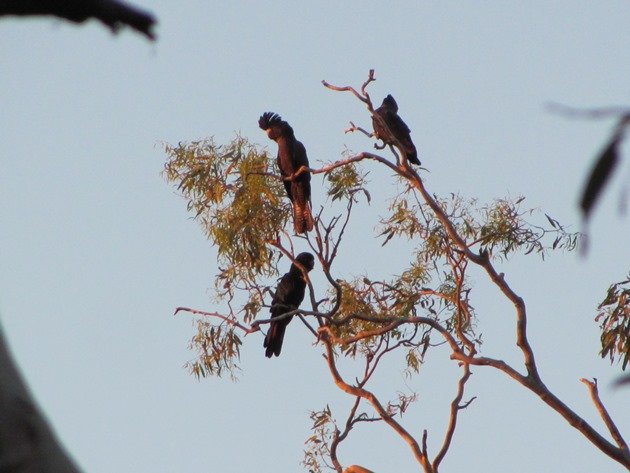
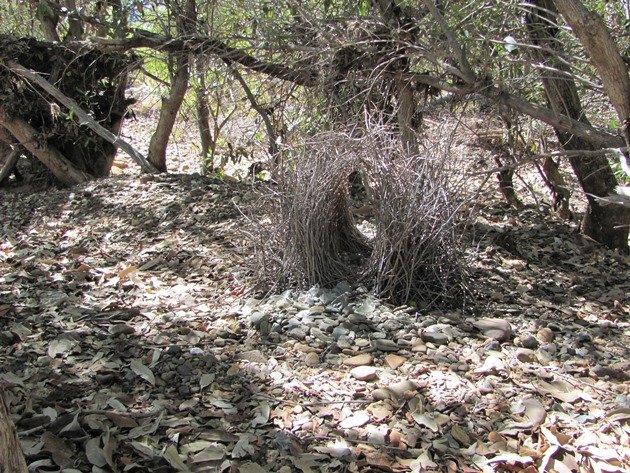
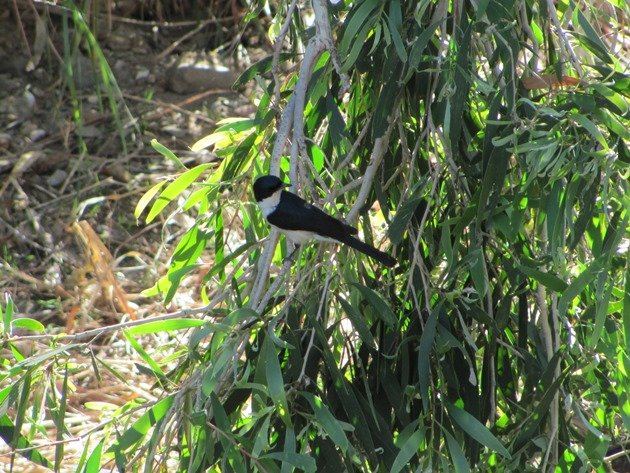
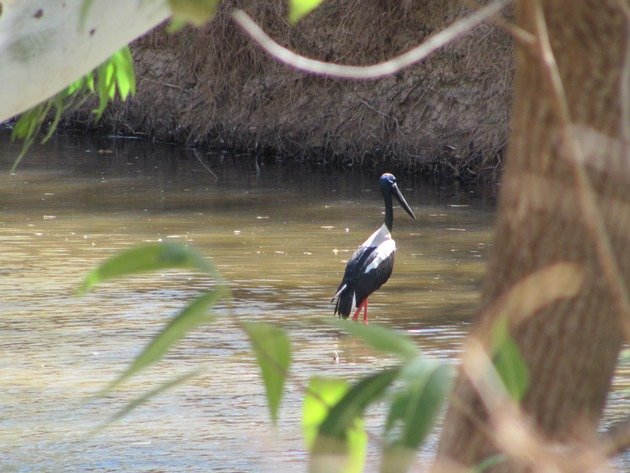










What amazing birds! Those Red-tailed Cockatoos are incredible! Your Pink-eared Ducks have a huge bill, just like our Northern Shovelers. I wonder if they are related?
We also have Shovelers, but mainly in the south of the country. Cockatoos are great birds, but they don’t wake up quietly! 🙂